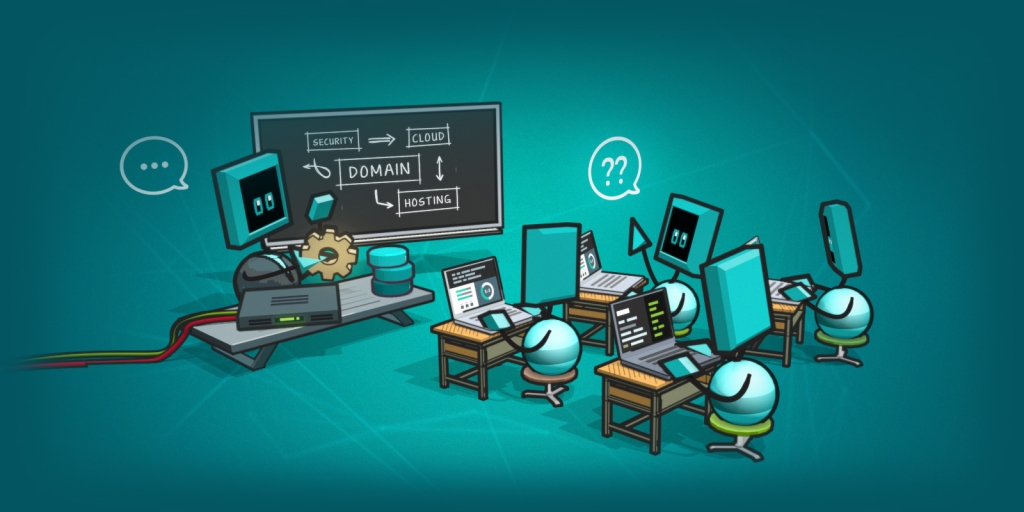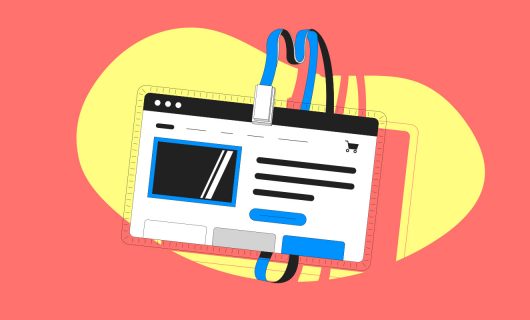So you’ve got an idea. Maybe it’s a business idea, maybe it’s an art project, maybe it’s time to get your portfolio online and out there someplace that’s not owned by a gargantuan, privacy-violating social network. And you’ve figured out you need a website.
How do you get from your idea to your first webpage?
Well, here’s what you’ll need:
- A domain name
- Hosting
- A website platform
Get a domain name
A domain name is your website’s address on the internet. It’s how you’ll be communicating to other people how to find your webpage, whether that’s on social media, face-to-face, on the phone, written on a scrap of paper, or written on a business card.
It might seem like a basic step, but choosing a domain name can be hard! Our advice is to keep it short and memorable.
And remember you’re not restricted to buying a .com (though there are definite advantages with going with the most common, most popular domain).
There are literally thousands of options ranging from generic (.xyz or .site for example), geographic (.us, .ca, or .fr for example), or niche (.wine, .car, or .horse).
Your domain name should come with DNS servers. DNS is what’s used on the internet to link up the domain name to the server the website is hosted on.
Get hosting
Hosting refers to a service offered online that essentially lets you use server space to host your website.
A website is a digital document, just like any document you might have saved on your computer, which means that at the very least, it needs to be stored on a computer with a connection to the internet that’s configured to “serve” webpages over the internet.
There are many different kinds of hosting services you could potentially purchase, depending on your needs and different hosting services offer you different amounts of control over this computer and the software running on it.
Services that provide just the bare-bones infrastructure and let you manage the rest are referred to as “Infrastructure-as-a-service.” Unless you’re already very technically savvy, this isn’t ideal for your first webpage.
You might consider purchasing a “platform-as-a-service” type of hosting, though. This type of hosting gives you everything you need to install your own website application. Oftentimes, the application you need to install can come “pre-installed,” which lowers the barrier to greater customizability to those without advanced technical skills.
Finally, many website editors exist that let you drag-and-drop webpage elements in a graphical interface. The advantage is how easy this is to launch and later edit. The downside is that you’ll have less control over your site, you’ll likely pay for the use of the editor, and you’ll have less options (though those you have will come pre-packaged and ready to go) in terms of customizability. These editors will host your website for you.
Get a website platform
The website editor option we just mentioned is one type of website platform, as are the website applications we also mentioned above.
If you’re going with a website application, you might consider a CMS, which stands for Content Management System. If a webpage is a document, a CMS is sort of like a word processor in that it’s software for writing, editing, an designing webpages.
The majority of websites on the internet use a CMS called WordPress, but there are many other CMSes out there. If you want a CMS, we suggest putting some thought into how you’ll be using it before you commit.
If you need to install a website application like a CMS, you’ll need to install the application on your hosting service.
Design your website
Regardless of the website platform you choose, including if you choose a drag-and-drop style website editor, you’ll have some templates or themes to choose from that are pre-set designs for your website.
These templates or themes will include:
- Page layout and structure
- A general color palette
- How buttons look
- Size, color, and fonts for text
- Navigation menus
- Image galleries
These will fall into a few different categories that broadly represent what large groups of people making websites need. Some common categories are:
- Blogs
- Portfolios
- E-commerce
- Restaurants
- Art and photography
To get your first webpage online quickly, we suggest going with a template you like that fits your needs.
Then, you can customize.
Here are some things to think about customizing:
- The size of different elements like buttons, navigation menus, and images
- The color palette of the website
- Fonts, text color, and text size
- Links to social media
Add content
Finally, you can start adding your website content. If your webpage is for a restaurant, that might include pictures of food, a copy of your menu, and contact information. If it’s a blog, that might be your first blog post. If you’re putting your photography portfolio online, then now’s the time to upload those images.
Before you go live, make sure you check a few things first, namely:
- That all your links, buttons, and menus work
- That it loads quickly
- That it works on mobile devices
- That it works in multiple browsers
- That there are no typos or spelling and grammar errors
Publish!
All that’s left now is to publish your content and start sharing your website!
From idea to webpage
If all you have is an idea, it might seem intimidating to think about turning it into a fully fledged webpage. But the steps are relatively simple, and you can go from zero to posting in no time!
The internet opens up the possibility for anyone with an idea to turn it into something people across the world can see and interact with in no time at all.
Tagged in Domain names



